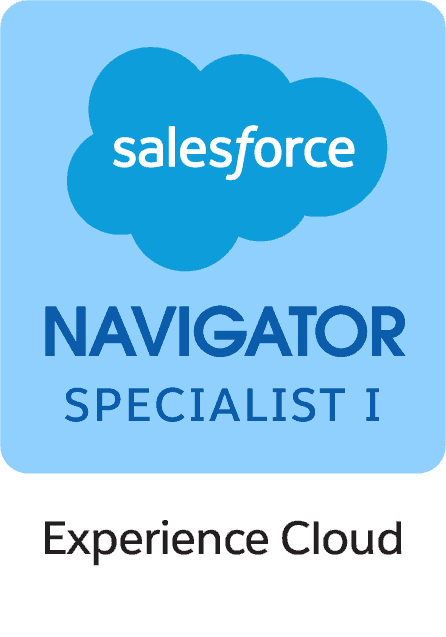Experience Cloud
Why do you need it?
Salesforce Experience Cloud offers more than just digital experiences—it promises to transform how businesses engage with customers, partners, and employees. But is your organization ready to unlock its full potential, or will implementation challenges hold you back? Discover the possibilities and pitfalls, and learn how Smartbridge can guide you through the journey.
Salesforce Experience Cloud is the best way to create and manage personalized, branded online experiences for their customers, partners, and employees. These experiences can take the form of websites, portals, forums, and mobile apps, all integrated with the Salesforce ecosystem.
But with so many ways to achieve these types of portals and sites, why is Experience Cloud the way to go? If you already are using Salesforce as your CRM, it makes perfect sense to evaluate the upgrade. Experience Cloud has a range of features that make it a compelling addition to a company’s Salesforce ecosystem, particularly for creating well-thought-out portals, intranets, websites, and other digital experiences.
You need Experience Cloud If…
Not every company needs Experience Cloud on top of Sales and Service Cloud – you can probably get all the functionality you need with those two standard clouds on their own. But when are they not enough? Here are the 4 key purposes for Experience Cloud, assuming you want to create meaningful experiences for your audiences.
Customer Experience
Partner Experience
Employee Experience
Will you need other Salesforce applications if you have Experience Cloud?
While Salesforce Experience Cloud can function independently, integrating it with other Salesforce cloud applications can enhance its capabilities. For example:
While it’s not mandatory to use other Salesforce clouds, doing so can create a more cohesive and feature-rich experience for users in your Experience Cloud.
Potential Pitfalls of Experience Cloud Implementations
There are typical issues that arise with the early implementation or adoption of Experience Cloud.
Some companies are struggling with Salesforce Experience Cloud implementations due to several common challenges. These challenges often include difficulties with data migration, where transferring data from legacy systems to Salesforce can be complex and lead to issues such as duplicate or inconsistent data.
Additionally, user adoption can be a significant hurdle, as employees may resist changing their workflows or fail to fully leverage the platform’s capabilities due to insufficient training.
Customization challenges also arise, particularly when companies lack the technical expertise needed to tailor Salesforce to their specific needs.
For instance, some businesses face issues with integrating Salesforce Experience Cloud with other systems, leading to delays and increased costs. Others struggle with defining and managing their customization requirements, which can result in over-customization or suboptimal configurations that don’t fully meet the business’s needs. Security concerns, particularly around setting up appropriate user permissions and protecting sensitive data, also present challenges during implementation.
These issues can lead to project delays, cost overruns, and even implementation failures, which is why companies often turn to experienced Salesforce consultants to guide them through the process and mitigate these risks.
If you have doubts as to whether Experience Cloud is a fit for your organization, or have problems such as the ones above, let’s discuss it. Smartbridge offers no-obligation 30 minute calls with a Director or Senior Manager of Salesforce services, skipping sales altogether. Reach out or book on their calendars instantly!
Looking for more on Salesforce?
Explore more insights and expertise at smartbridge.com/salesforce
There’s more to explore at Smartbridge.com!
Sign up to be notified when we publish articles, news, videos and more!
Other ways to
follow us:





